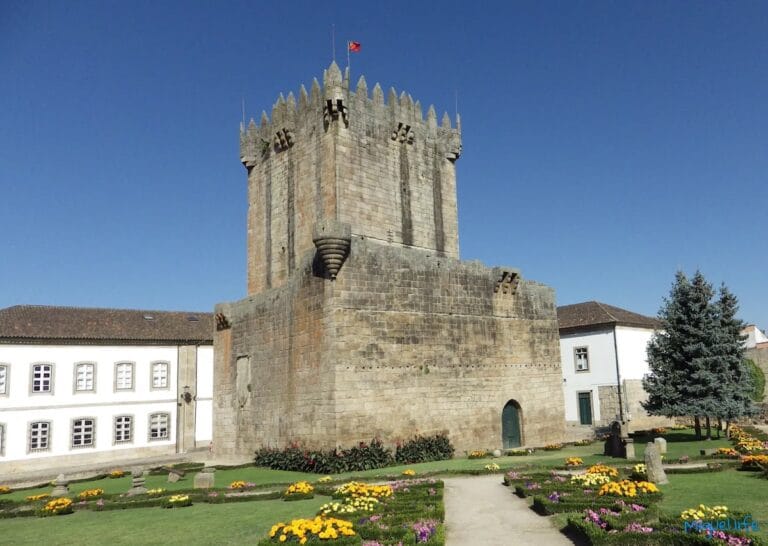Montalegre Castle: A Historic Fortress in Northern Portugal
Visitor Information
Google Rating: 4.5
Popularity: Medium
Google Maps: View on Google Maps
Official Website: www.cm-montalegre.pt
Country: Portugal
Civilization: Medieval European
Remains: Military
History
Montalegre Castle is located in the municipality of Montalegre in northern Portugal. The site originally hosted a prehistoric fortified settlement known as a castro, indicating its long-standing strategic importance. This early settlement was later occupied by the Romans, as demonstrated by coins and inscriptions discovered on the site, which reflect Roman control and influence.
Following the decline of the Roman Empire, the territory came under the rule of the Suevi starting in 411 CE. Over time, Visigothic authority replaced this, with the Visigoths controlling the area from 585 CE. During the Christian Reconquista, beginning in the mid-8th century, the site faced repeated assaults by Muslim forces, illustrating the castle’s position along the contested frontier between Christian and Islamic powers. Throughout this period, it was part of the Kingdom of Gallaecia until Portugal emerged as an independent nation.
The construction of the current castle likely began after Montalegre was granted a Foral charter, or royal town charter, by King Afonso III on June 9, 1273. This charter encouraged development and settlement, a policy continued under King Denis (1279–1325), who also issued privileges to attract residents to the area. The castle’s completion occurred in 1331 during the reign of King Afonso IV, confirmed by an inscription at the base of the south tower, marking the culmination of nearly six decades of work.
During the crisis of 1383–1385, a dispute over the Portuguese throne, Montalegre’s town and castle supported Beatrice’s claim. Following the decisive Battle of Aljubarrota, the castle was brought under the control of King John I. Subsequently, the lands of Barroso, including Montalegre, were granted to Constable Nuno Álvares Pereira, a key figure in securing Portuguese independence.
In the early 16th century, Montalegre Castle was documented in Duarte de Armas’s “Livro das Fortalezas,” produced around 1509. This illustrated record provided detailed depictions of the castle during that time. Later, in 1515, King Manuel I renewed the Foral charter, updating the town’s administrative status. Repairs were carried out in 1580 under Manuel Antunes de Viana, acknowledged in an inscription on the south tower, demonstrating ongoing maintenance efforts.
The castle underwent modifications during the Portuguese Restoration War (1640–1668), adapting its defenses to resist artillery fire, reflecting changing military technologies. The 1755 Lisbon earthquake caused only minor damage to the structure, including the collapse of a battlement. A 1758 parish report provides a comprehensive description of the fortifications, noting four towers connected by walls, an outer wall and an additional counter-wall surrounded by a moat, and the presence of three gates and a smaller postern entrance. A wooden palisade atop the walls added further defensive strength.
Montalegre Castle was officially recognized as a National Monument in 1910. Restoration initiatives began in the 1980s, eventually leading to the establishment of a museum on site in the 1990s. Since 2021, the responsibility for managing the castle has shifted from the national government to the local municipality.
Remains
Montalegre Castle is strategically positioned at nearly 1,000 meters above sea level on a granite hill, offering expansive views of nearby mountain ranges and the Cávado River valley, close to the border with Galicia. The castle follows a roughly square plan, defined by four main towers connected by curtain walls that enclose a central courtyard. At the heart of this courtyard is a cistern, a vital water storage feature typical of medieval fortifications.
The most prominent tower is the keep on the northern side, built in the Gothic style and soaring approximately 27 meters high. This tower features defensive architectural elements such as machicolated balconies—openings through which defenders could drop objects or pour substances on attackers—as well as corbels (projecting stones supporting the structure) and uniquely shaped battlements with five sides. Inside, the rooms display stone vaulted ceilings, adding structural strength and fire resistance.
On the southern side of the castle stand the Torre Furada (literally “Pierced Tower”) with a square footprint, alongside two rectangular towers named Torre do Relógio, which translates to “Clock Tower,” and Torre Pequena, or the “Small Tower.” These towers helped reinforce the castle’s defense on that side.
Historically, the castle was protected externally by two successive lines of defensive walls, as depicted in Duarte de Armas’s early 16th-century drawings. These outer fortifications included a moat, adding an additional obstacle against attackers. However, these outer defenses no longer survive today, having been gradually dismantled or fallen into ruin over time.
The medieval settlement related to the castle grew primarily to the east and south of the fortress walls. Access to the castle was controlled by three main gates on the north, west, and south sides. A smaller postern gate provided a discreet entrance between the west and south gates. A wooden palisade once ran along the tops of the walls, providing defenders with an extra layer of protection by preventing easy scaling of the walls.
Today, much of the original stonework remains visible and has benefited from restoration efforts, allowing visitors to appreciate the fortification’s imposing structure and understand its role in regional defense throughout centuries.







